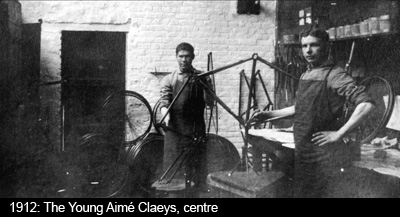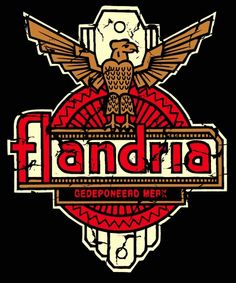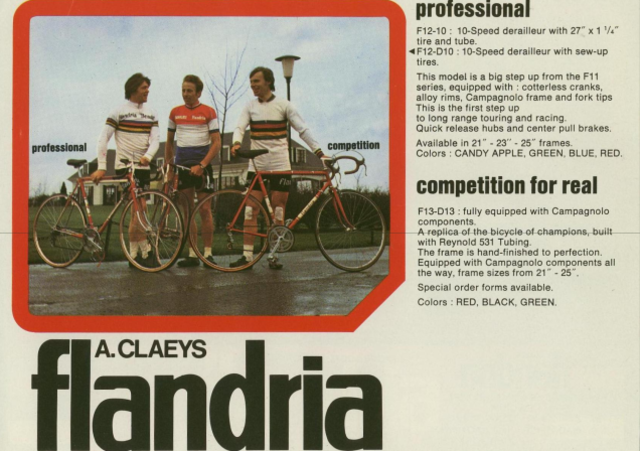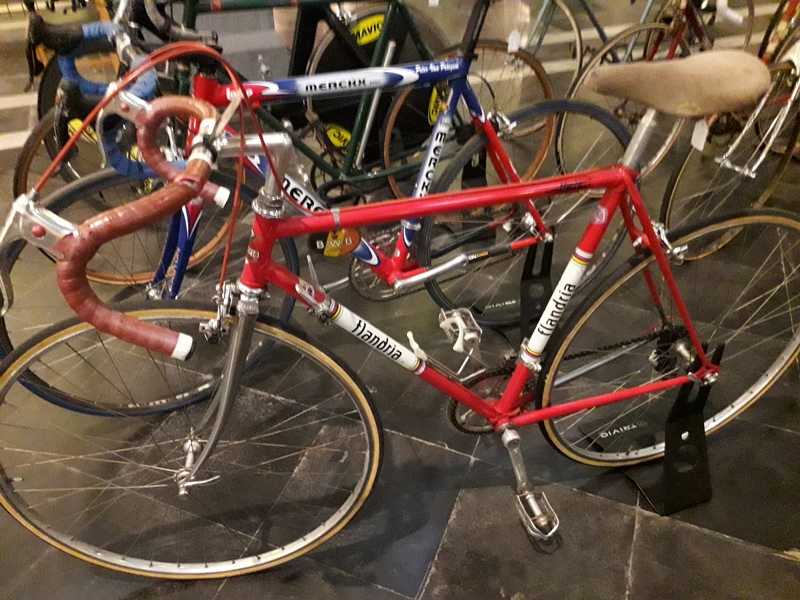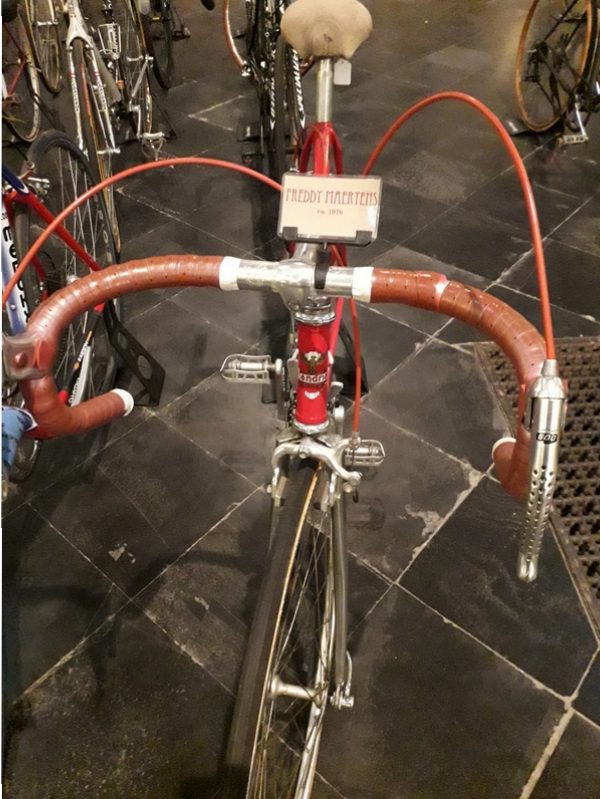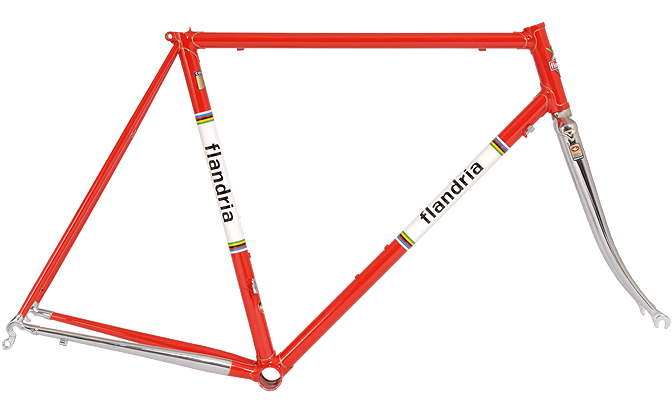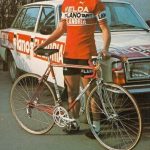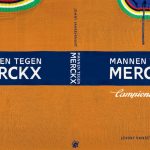You cannot ignore cycling history in the 1960s and 1970s without mentioning the red brigade of the popular Flandria team who rode on the red and white bicycles. Flandria bicycles have been made since 1940 and after bankruptcy in 1981 the brand is back on the market.
All the more reason to provide an overview of the history of Flandria cycling.
Bicycle brand De Westvlaamsche Leeuw
The history of Flandria starts at the beginning of the 19th century when Alexander Claeys marries someone from the Dombrecht family, who had a blacksmith shop in Zedelgem. Louis Claeys was born in 1846, who started in his early twenties with the production of small rolling toys and prams, but also saw a great future in the bicycle industry, resulting in the launch of his first bicycle in 1896.
These bicycles were given the brand name Westvlaamsche Leeuw and in 1910 the number of bicycles sold had already risen to 150. After WWI, the demand for bicycles increased with the result that Aimé, son of Louis and the driving force behind the Westvlaamsche Leeuw, together with his brothers Alidor, Rémi and Jerome, founded the workhouses Gebroeders Claeys in 1924, which, in addition to bicycles, also produce agricultural machines. In 1927 the magic figure of 25,000 bicycles is exceeded.
Origin of the Flandria brand
In 1940, Aimé Claeys decides to modernize his factory, changing the name Westvlaamsche Leeuw to Flandria. After WWII, the demand for bicycles continues to rise and by 1952 about 250,000 bicycles are being produced annually. A new factory is also being built in Zwevezele and mopeds are also being added to the range.
Although things are going well, things have not worked out between Aimé and Remi for years and in 1957 this escalates into a serious quarrel in which a wall is literally built in the factory of Zedelgem. Some heavy, stationary machines stand in the place of the wall through which these machines are built.
From then on, Aimé will continue with the Flandria brand, which is now A. Claeys – Flandria, and Remi establishes the Remi Claeys – Superia brand.
Both brothers continue to compete fiercely during this period, resulting in high production. In the 1970s, Flandria produced no fewer than 450,000 bicycles a year, in addition to mopeds, heating appliances and lawn mowers, in 4 factories: Zedelgem, Zwevegem, Agueda in Portugal and Warneton in northern France.
Both Flandria and Superia also sponsor a professional cycling team in which Flandria has the most success, winning no fewer than 70 classics, 2 Grand Tours and 2 World Championships between 1959 and 1979. In its 20th anniversary, the following clappers have been part of the Flandria team:
- Leon Vandaele,
- Briek Schotte,
- Walter Godefroot,
- Eric Leman,
- Jempi Monseré,
- Erik en Roger De Vlaeminck,
- Joop Zoetemelk,
- Michel Pollentier,
- Marc Demeyer,
- Joachim Agostinho,
- Freddy Maertens,
- Jan Janssen,
- Herman Van Springel
- Sean Kelly
Dit bericht bekijken op Instagram
The best-known vintage racing bicycles made by Flandria in this period are the
- Flandria Professional
- Flandria Competition
It must be said that the Flandria racing bikes could not match the quality of, for example, the Italian brands. It was also not so unusual at the time for many riders of the Flandria team to ride with a different brand, spray the bicycle in the Flandria colors and stick Flandria decals on it. All this without the knowledge of Flandria's management.
There is, for example, the story of Freddy Maertens who rode on Gios, but Pol Claeys, the Flandria boss at the time, came up with it and had Freddy's Gios cut into pieces.
From the end of the 60s of the last century, the rise of the cars started, which caused the production of both mopeds and bicycles to gradually decline. In 1979 only 32,000 bicycles roll off the production line every year. In 1981 the Flandria factory finally went bankrupt and however ironic, Superia, which had not produced bicycles for years, bought up the A.Claeys – Flandria brand. The dividing wall in the factory will be demolished and the bicycles will from now on be made under the Superia – Flandria brand.
However, a few years later, in 1986, the production of the bicycles was definitively stopped and sold to Arizona, led by Paul Seynaeve, an ex-sales director of Superia. This is immediately the end of the glorious brand with the red – white colors.
After a number of changes of ownership, two nostalgic British brothers bought the Flandria brand in 2002 and dreamed of a revival that will come in 2010. They are launching their modern Flandria bicycle in collaboration with Freddy Maertens.
There is also a new steel model on the market, this time made with high-quality Columbus SL Niobium tubes. You can also buy the bike directly on the website Flandriabikes.com
More information about the Flandria cycling team and their successes can be found in the article de Flandria wielerploeg, opkomst en teloorgang

